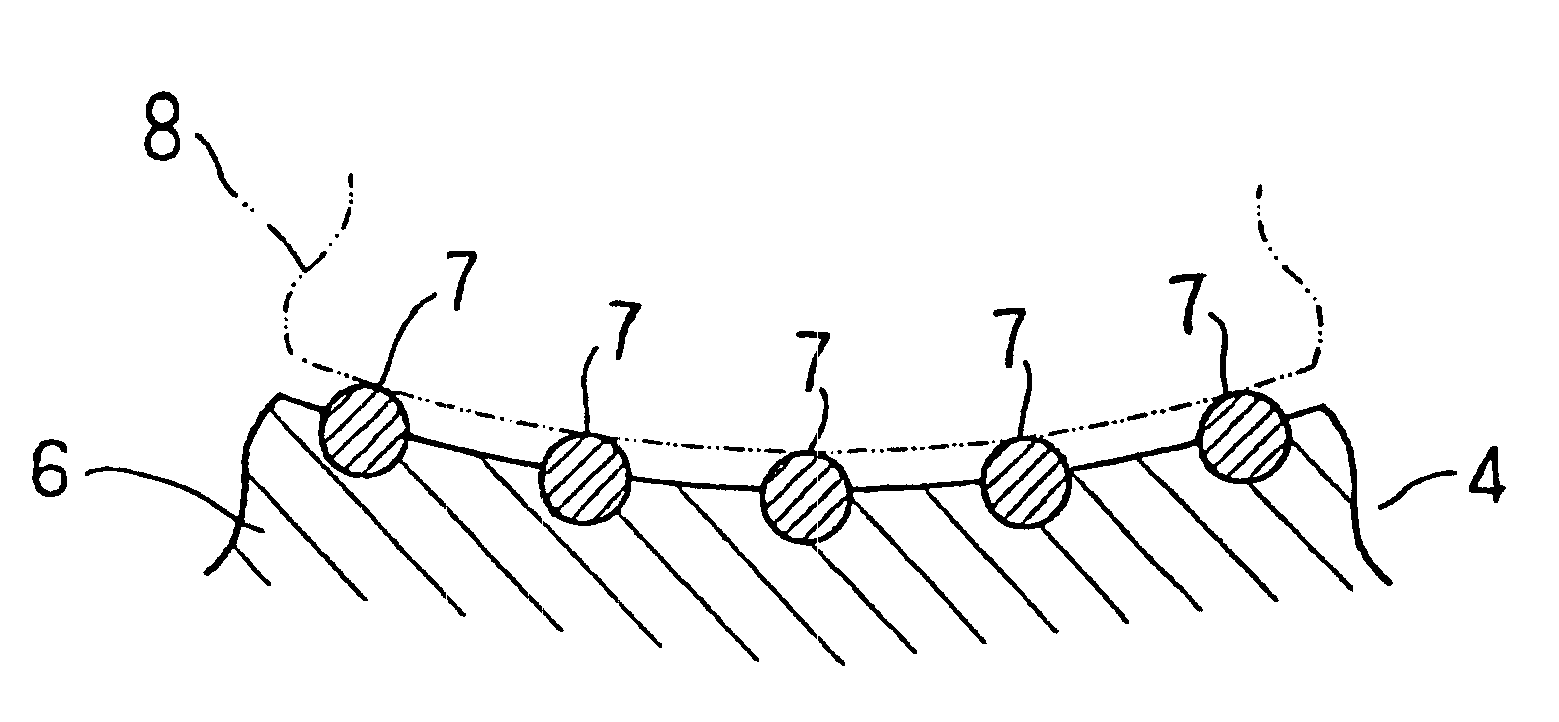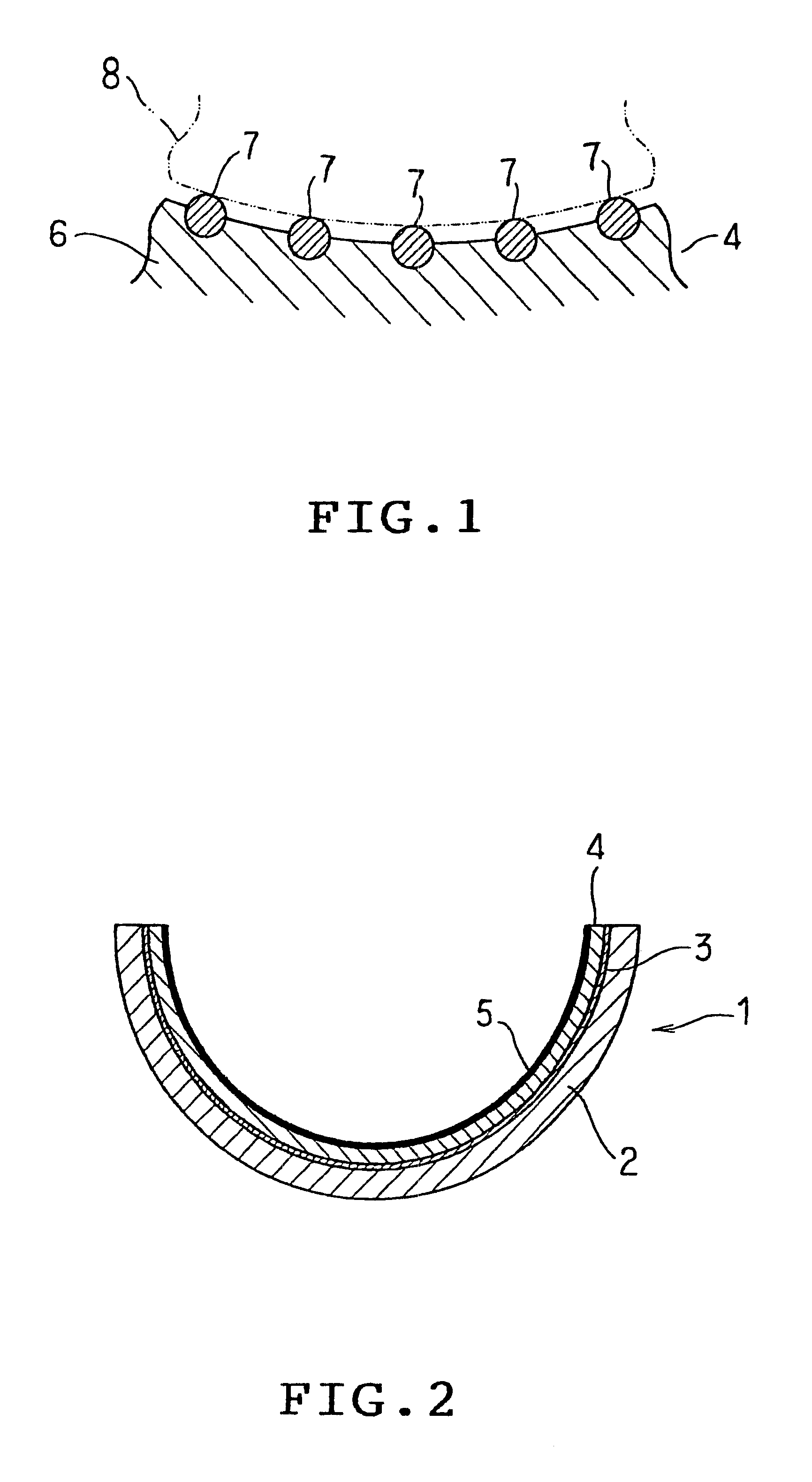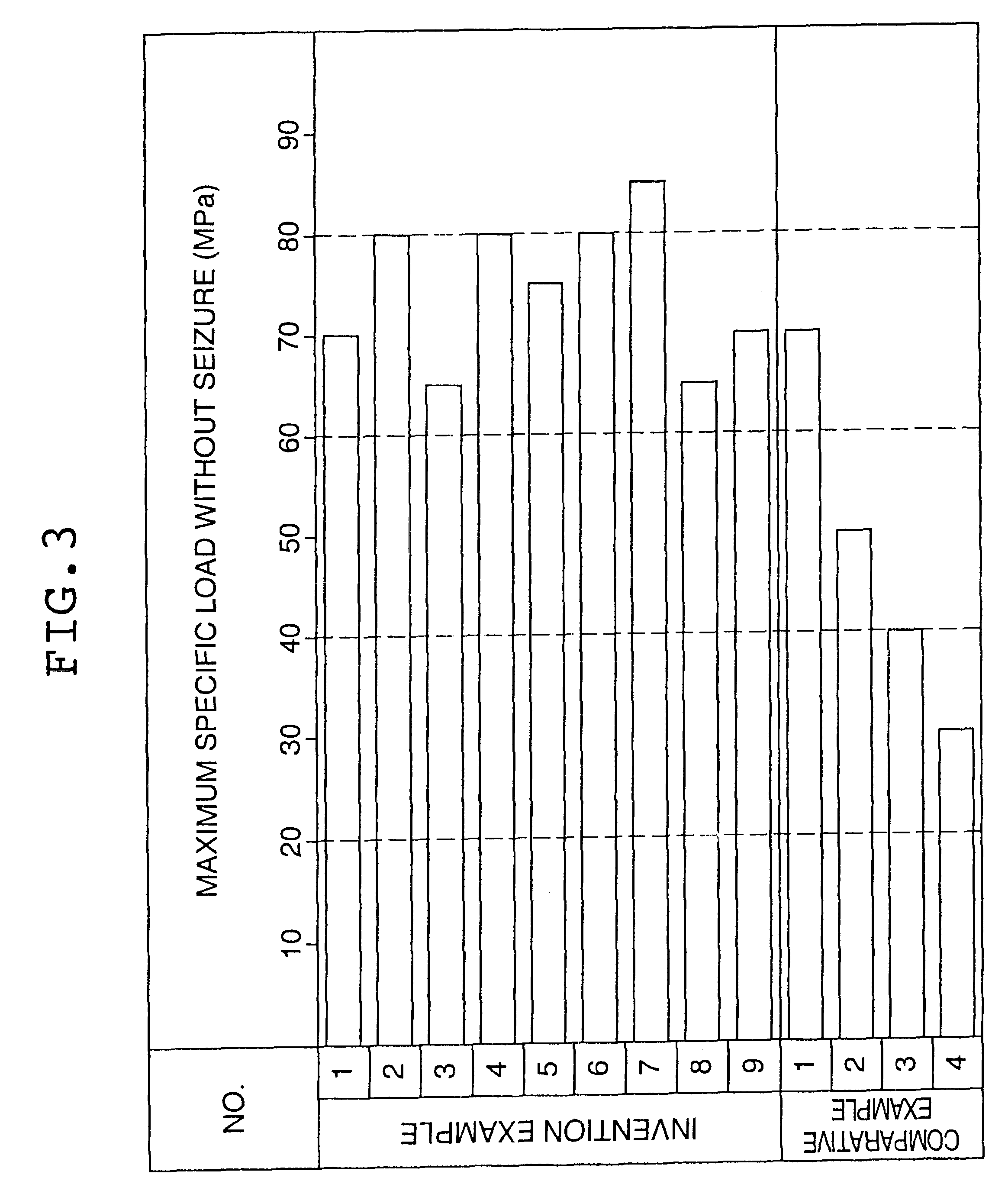Copper alloy sliding material
a sliding material and copper alloy technology, applied in the direction of mechanical equipment, rotary machine parts, transportation and packaging, etc., can solve the problems of falling off of hard particles from the copper system matrix, mo or w are comparatively adhesive, and the effect of shaving off the adhesives of the copper alloy from the mating shaft is less than in the field of copper alloy sliding material
- Summary
- Abstract
- Description
- Claims
- Application Information
AI Technical Summary
Benefits of technology
Problems solved by technology
Method used
Image
Examples
Embodiment Construction
Herein below, referring to the drawings, an embodiment of the invention will be described with respect to a plain bearing.
FIG. 2 shows schematically a structure of plain bearing 1 according to the invention. The plain bearing 1 is a so-called hemi-circular bearing half, a pair of which are combined cylindrically in use. The plain bearing 1 consists of a back metal 2 made of a thin steel plate, a copper alloy sliding material layer 4 of the invention, which is provided on the inner surface of the back metal 2 optionally via a copper plating layer 3 as a bonding layer, and an overlay layer 5 which is provided on the copper alloy sliding material layer 4 and made of a soft metal or resin.
The copper alloy sliding material layer 4 is of a copper system sintering alloy having a chemical composition as defined in the claims, for example, those of invention examples 1 to 9 described hereafter. Namely, the copper alloy sliding material layer 4 has a chemical composition of 0.5 to 15 mass % S...
PUM
| Property | Measurement | Unit |
|---|---|---|
| mass % | aaaaa | aaaaa |
| particle size | aaaaa | aaaaa |
| particle size | aaaaa | aaaaa |
Abstract
Description
Claims
Application Information
 Login to View More
Login to View More - R&D
- Intellectual Property
- Life Sciences
- Materials
- Tech Scout
- Unparalleled Data Quality
- Higher Quality Content
- 60% Fewer Hallucinations
Browse by: Latest US Patents, China's latest patents, Technical Efficacy Thesaurus, Application Domain, Technology Topic, Popular Technical Reports.
© 2025 PatSnap. All rights reserved.Legal|Privacy policy|Modern Slavery Act Transparency Statement|Sitemap|About US| Contact US: help@patsnap.com



